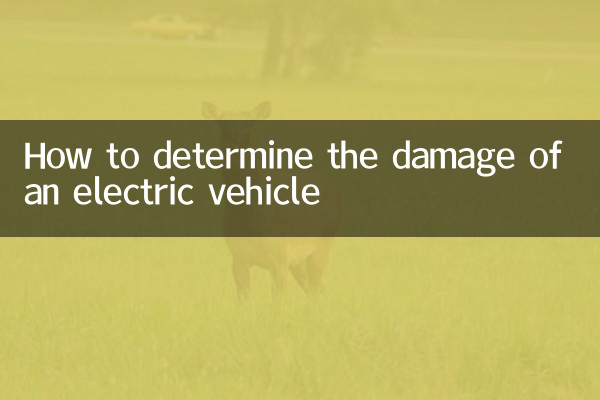How to determine the damage of electric vehicles: analysis of hot topics on the Internet
Recently, with the rapid growth of electric vehicle ownership, the issue of electric vehicle accidents and vehicle damage identification has become the focus of heated discussions across the Internet. This article will combine the hot topics and hot content in the past 10 days to provide you with a detailed analysis of the relevant standards and precautions for the identification of electric vehicle damage.
1. Main basis for identification of electric vehicle damage

According to the latest traffic regulations and insurance industry standards, the identification of electric vehicle damage is mainly based on the following aspects:
| Identifying factors | Specific content | Weight ratio |
|---|---|---|
| Accident liability determination | Accident liability determination letter issued by the traffic police | 40% |
| Vehicle damage | Level of damage assessed by professional agency | 30% |
| maintenance cost | Quotation from 4S shop or repair shop | 20% |
| Vehicle residual value | Vehicle age and depreciation rate | 10% |
2. Recent hot topics of discussion
Through the analysis of the entire network data in the past 10 days, we found that the following hot topics have attracted much attention:
1.How to identify battery damage: The standard for identifying damage to batteries, the core component of electric vehicles, has triggered widespread discussion, especially the issue of whether the battery pack should be replaced as a whole if it is partially damaged.
2.Intelligent system fault identification: As electric vehicles become more intelligent, the identification of software faults in autonomous driving systems and vehicle systems has become a new problem.
3.Third-party assessment agency credibility: Many netizens question the independence and professionalism of current third-party evaluation agencies and call for the establishment of a more transparent evaluation system.
3. Vehicle damage identification standards in different scenarios
| Accident type | Main recognition standards | Disputed points |
|---|---|---|
| bicycle accident | The degree of damage to the vehicle itself | Whether it involves product quality issues |
| Two cars collide | Proportional sharing of responsibilities | Accuracy of liability determination |
| natural disaster | Insurance company loss determination standards | Amount of compensation |
| man-made damage | surveillance evidence | Responsible person confirmation |
4. Consumer Rights Protection Suggestions
1.Get evidence in time: Take photos and videos as soon as possible after an accident occurs, and preserve on-site evidence.
2.Choose formal channels: Damage assessment and repairs should be carried out through insurance companies or officially authorized repair points.
3.Understand relevant regulations: Familiar with relevant regulations such as the "Road Traffic Safety Law" and "Electric Vehicle Maintenance Specifications".
4.Keep all documents: Including maintenance invoices, replacement parts lists, etc. for subsequent use in rights protection.
5. Industry development trends
According to analysis by industry experts, the future damage identification of electric vehicles will show the following trends:
| Development direction | Specific performance | Estimated time |
|---|---|---|
| digital assessment | Using AI technology for remote loss assessment | 2024-2025 |
| Standardization system | Unify national damage assessment standards for electric vehicles | before 2025 |
| Transparent process | Blockchain technology is applied to the loss determination process | After 2026 |
As an emerging means of transportation, electric vehicles’ vehicle damage identification standards are still being improved. When consumers encounter relevant problems, they should remain rational and safeguard their rights and interests through legal channels. At the same time, we also hope that relevant departments can introduce more complete damage assessment standards for electric vehicles as soon as possible to protect the development of the industry.

check the details

check the details